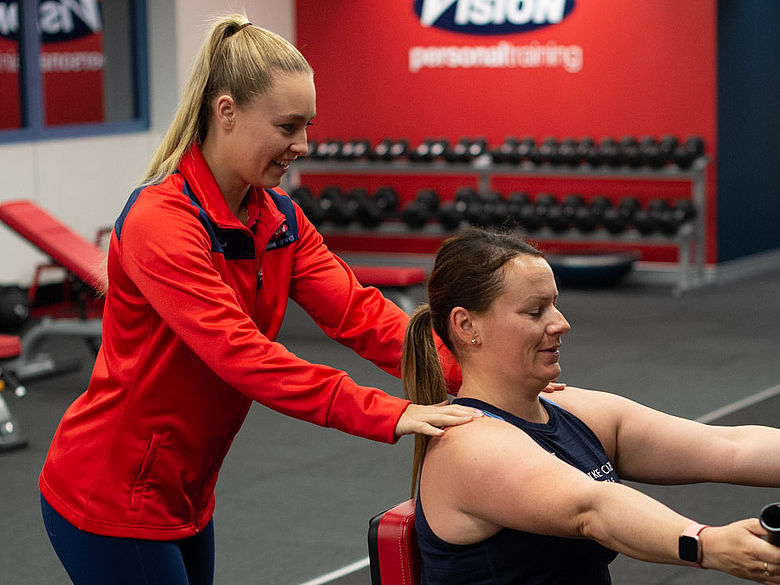Are We Fat Phobic?
Fat. It's become a bit of a dirty word, however a clean, healthy body and a balanced nutrition program depends on its inclusion in our daily diet. So why does fat get such a bad rap? Is it because we have been told to believe the standard Western diet is too "fatty" and therefore causes weight gain? Partly. Is it because low fat diets have been hammered into us as the best way to shed unwanted weight? Very possibly. Is it because we subconsciously associate fat in our diet with fat in our bodies? Undeniably. However contrary to this inherent belief, and you may want to sit down for this; eating fat, does not always make us gain fat.
"But Claire", you may ask, "If this is true, why do health professionals advocate a low fat diet for heart health and general physical wellbeing?" well, this all boils down to one fundamental fact about fat: all fats are NOT created equal.
Healthy fats. Vs Unhealthy Fats
You may have heard that there are "good" fats and "bad" fats, and while I avoid labelling food as good or bad, there is a clear distinction between fats that are beneficial and necessary for our bodies, and fats that are detrimental.
|
Type of Fat |
Technical Classification |
Effect on our bodies |
Found In |
|
Healthy fats Liquid at room temperature |
Unsaturated, monounsaturated and polyunsaturated (also known as omega 3 and 6) fats |
|
Cold pressed nut, vegetable and seed oils (e.g. canola and safflower oil), soy products, seeds, avocado, olives, cold water fish |
|
Unhealthy fats Solid at room temperature |
Saturated and trans fats |
These fats contain LDL's (low density lipoproteins) which are a major cause of heart disease and other high cholesterol related conditions. They "clog" arteries and restrict blood flow to the heart in addition to causing weight gain. |
High fat meat products, butter, cheese, vegetable shortening, fried foods, hydrogenated oils, margarine, fat found in processed foods e.g. pastries |
Sneaky Fat
Hang on! Wasn't margarine created as a healthier alternative to butter? Why is it classified as an unhealthy fat?
Yes, it was; and that is a perfect example of how the advertising of food is obesity's best friend and society's worst enemy. We all know that "low fat" products are generally much higher in sugar to account for the loss of tastiness that removing the fat in a product will cause. However, what most people don't know is margarine is made from hydrogenated oil. Hydrogenation is caused by heating oil in a particular way that turns an unsaturated fat into a trans-fat which is solid at room temperature, thus improving its shelf life and making it more commercially viable and profitable. Which means that really, margarine is nowhere near as good an alternative to butter as we are being lead to believe. Unscrupulous, right?
Tip:
This same principle occurs when you heat olive oil for cooking. Try canola oil as an alternative as it does not change its structure when heated.
Getting the Most Out of Fat
My top tips for ensuring your diet has enough (but not too much) fat:
- A small handful of nuts is always enough
The fat content of nuts is very concentrated and a small handful contains around 10 grams of essential unsaturated fat. Have them with a piece of fruit to lower the release of fructose (sugar form fruit) into your blood stream - thus avoiding the sugar high and crash and facilitating a longer, sustained release of energy from your snack.
- Sneaky Salmon
Omega 3 (found in fish) and 6 (found in most previously mentioned oils) are known as Essential Fatty Acids as they cannot be produced by our bodies and we must ingest them through our diet. But be careful! Salmon has a much higher fat content than other fish, sitting at around 20g for a standard fillet, so plan your intake accordingly!
- Consciously include fat
Whether it's 30g of avocado (which packs a healthy punch with 5g of fat) at breakfast, a tuna salad for lunch, or a dollop of natural peanut butter in your banana smoothie (my personal favourite combo), make sure to consciously include a dose of healthy fat in every meal - including snacks!
Finding the right balance of macronutrients can be challenging and a diet promoting fat loss is ideally around 55% protein 30% carbohydrates and 15% fat. Get your hands on as much information as you can about how to fuel your body for weight loss success and nutritional health and empower yourself with the knowledge of how to get you in the best shape of your life!
For more info visit www.visionpt.com.au/studios/gladesville
*Disclaimer: Individual results vary based on agreed goals. Click here for details.

